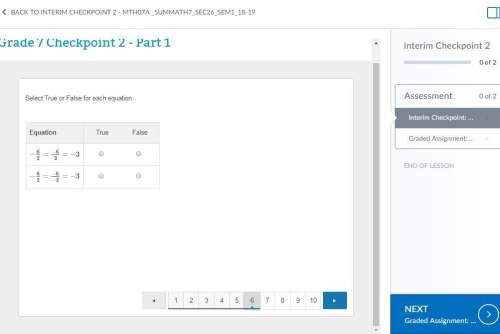
Mathematics, 30.03.2020 04:10 yselahernandez02
An account paying 3.2% interest compounded semiannually has a balance of $32,675.12. Determine the amount that can be
withdrawn from the account semiannually for 5 years. Assume ordinary annuity and round to the nearest cent.
a $3,505.80
b. $3,561.90
C. $3,039.09
d. $2,991.23

Answers: 2
Another question on Mathematics

Mathematics, 21.06.2019 18:40
Juliana says that she can use the patterns of equivalent ratios in the multiplication table below to write an infinite number of ratios that are equivalent to 6: 10. which statement explains whether juliana is correct? she is correct because she can multiply 6 and 10 by any number to form an equivalent ratio. she is correct because 6: 10 can be written as 1: 2 and there are an infinite number of ratios for 1: 2. she is not correct because the multiplication table does not include multiples of 10. she is not correct because 6: 10 is equivalent to 3: 5 and there are only 9 ratios in the multiplication table that are equivalent to 3: 5.
Answers: 1

Mathematics, 21.06.2019 21:00
What is the missing statement in step 4? ? rts ? ? vtu and ? rtu ? ? vts ? rts ? ? rvs and ? rtu ? ? stv ? vrs ? ? vru and ? usr ? ? usv ? vur ? ? vus and ? uvs ? ? sru
Answers: 3


Mathematics, 21.06.2019 23:30
Asap (i need to finish this quick) graph complete the sequence of transformations that produces △x'y'z' from △xyz. a clockwise rotation ° about the origin followed by a translation units to the right and 6 units down produces δx'y'z' from δxyz.
Answers: 1
You know the right answer?
An account paying 3.2% interest compounded semiannually has a balance of $32,675.12. Determine the a...
Questions

Social Studies, 07.06.2021 22:40



Mathematics, 07.06.2021 22:40


Health, 07.06.2021 22:40

Mathematics, 07.06.2021 22:40

Chemistry, 07.06.2021 22:40

Mathematics, 07.06.2021 22:40


Social Studies, 07.06.2021 22:40

Mathematics, 07.06.2021 22:40


Mathematics, 07.06.2021 22:40


Spanish, 07.06.2021 22:40



Mathematics, 07.06.2021 22:40




